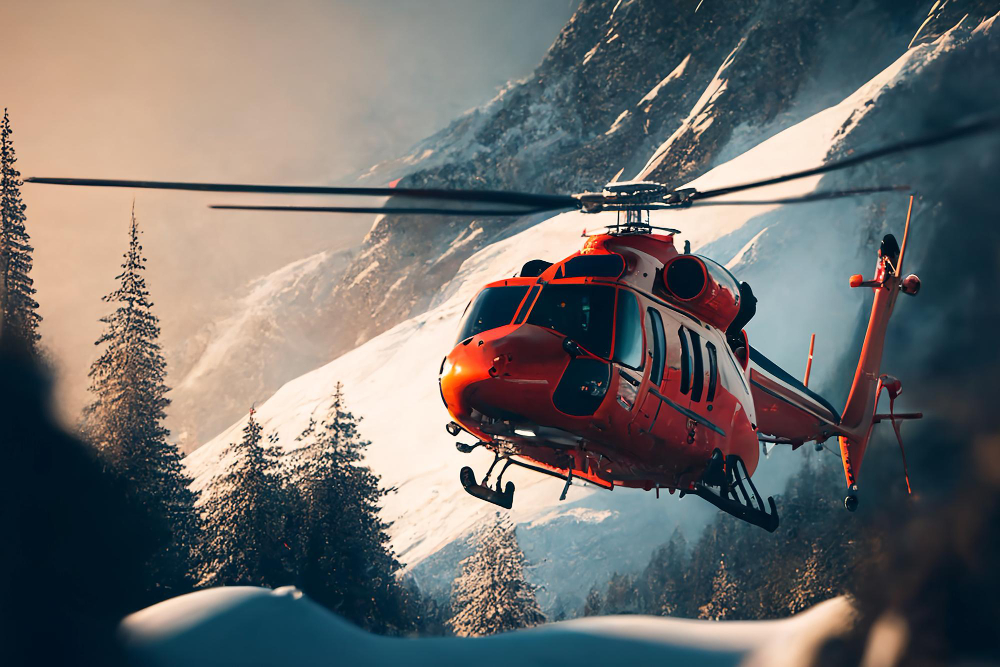
Skiing is undeniably a thrilling and exhilarating sport that offers a unique way to enjoy the beautiful slopes and breathtaking landscapes. However, it is important to recognize that like any adventure sport, skiing does come with inherent risks and dangers. In this blog post, we will explore the potential dangers of skiing and the importance of having winter sports travel insurance coverage to ensure peace of mind during your skiing trip.
The Risks of Skiing
Skiing involves navigating through a variety of terrains and weather conditions, which can pose certain risks. Here are some of the potential dangers you may encounter while skiing:
- Avalanches: Skiing in mountainous regions increases the risk of avalanches, especially during periods of heavy snowfall or unstable snowpack. It is crucial to check the local avalanche forecast and follow the guidance of experienced skiers or resort authorities. Avalanche safety gear, such as transceivers, shovels, and probes, should be carried, and knowledge of avalanche rescue techniques could be life-saving.
- Dangerous Drops: Steep slopes or cliffs can be enticing for advanced skiers seeking a thrill, but they can also be hazardous. Dropping off from a significant height without proper training or experience can lead to serious injuries. To mitigate this risk, it is essential to know your limits and gradually progress to more challenging terrains. Taking lessons from a certified ski instructor who specializes in advanced techniques can improve your skills and confidence.
- Collisions with Other Skiers: Ski resorts can get crowded, especially during peak seasons. Collisions with other skiers, caused by reckless behavior or lack of awareness, can result in various injuries ranging from minor bruises to more severe fractures. Practicing responsible skiing etiquette, such as maintaining control, yielding to others, and giving skiers ahead enough space, can help prevent accidents.
- Falls and Injuries on Slopes: Even skilled skiers can fall due to icy patches, uneven surfaces, or loss of balance. These falls can result in sprains, dislocations, broken bones, or head injuries if not properly protected. Wearing appropriate ski gear, including a well-fitted helmet, goggles, and protective clothing, can minimize the risk of injury and provide added protection.
- Collisions with Trees or Rocks: Skiing off-piste or in the backcountry poses additional risks such as collisions with trees or rocks. The potential for injury is higher when skiing in unmarked areas, making it essential to have the necessary skills and knowledge to navigate safely. Always check avalanche conditions, carry necessary safety equipment, and inform others about your intended route when venturing off-piste.
- Weather and Visibility: Weather conditions can change rapidly in mountainous regions, leading to reduced visibility and challenging skiing conditions. Thick fog, heavy snowfall, or strong winds can make it difficult to see and navigate the slopes safely. Monitoring weather forecasts and adjusting your plans accordingly is crucial to avoid dangerous situations.
- Altitude and Health Concerns: Ski resorts are often situated at high altitudes, which can cause altitude sickness symptoms such as headaches, dizziness, and shortness of breath. It is important to acclimatize gradually, stay hydrated, and seek medical attention if symptoms worsen. Additionally, pre-existing health conditions, such as heart or respiratory problems, may be exacerbated at high altitudes. Consulting with a healthcare professional before your trip is advisable.
How Can I Avoid Injury When Skiing
While skiing carries inherent risks, it is important to note that the majority of skiers do not experience significant injuries. By following these safety tips, you can greatly reduce the chances of getting injured:
- Ski Responsibly: Avoid skiing faster than your skills and comfort level allow. Take it slow and gradually increase your speed as you become more confident on the slopes. Maintain control over your speed and be prepared to stop or change direction when necessary.
- Be Aware of Other Skiers: Always pay attention to your surroundings, especially when skiing in crowded areas. Maintain a safe distance from other skiers and be mindful of their movements to avoid collisions. Remember that skiers ahead of you have the right of way, and it is your responsibility to ensure a safe overtaking maneuver.
- Respect the Slope Etiquette: Do not stop on blind corners, narrow sections, or below a bump in a hill. This will ensure that other skiers have enough time to see and react to your presence, promoting a safer skiing experience for everyone. Yield to skiers downhill and avoid obstructing the slope.
- Wear Protective Gear: Equip yourself with appropriate safety gear, including a helmet, goggles, and wrist guards. These protective measures can significantly reduce the risk of head injuries, eye injuries, and wrist fractures. Dress in layers to stay warm and comfortable, and wear sunscreen to protect your skin from sunburn and harsh mountain rays.
- Take Lessons: If you are new to skiing or want to improve your technique, consider taking lessons from qualified instructors. Learning the proper techniques and safety rules will enhance your ability to ski safely while minimizing the risk of injury. Instructors can provide valuable guidance on technique, equipment, and mountain safety.
- Stay Hydrated and Take Breaks: Skiing is physically demanding, and staying hydrated is crucial to maintain optimum performance and avoid fatigue. Drink plenty of water and take regular breaks to rest and refuel. Listen to your body and know when it’s time to take a break or call it a day to prevent overexertion and potential injuries.
- Be Prepared for Changing Conditions: Check the weather forecast before heading out and be prepared for changing conditions on the mountain. Dress appropriately for the temperature and weather conditions, and adjust your skiing technique accordingly. Avoid skiing in adverse conditions or on slopes that are beyond your skill level.
Choosing Insurance for Skiing
Given the potential risks associated with skiing, it is highly recommended to have insurance coverage specifically tailored for your ski trip. Here are some factors to consider when choosing insurance:
- Medical Coverage: Look for insurance plans that provide adequate medical coverage for emergency medical treatment, including ambulance services, hospital stays, and surgeries. Ensure the coverage amount is sufficient for the destination you plan to ski in. Some policies may also cover physiotherapy or follow-up treatments if needed.
- Evacuation and Repatriation: In case of a severe injury or illness, having coverage for emergency evacuation and repatriation can be crucial. This coverage ensures that you can be safely transported to the nearest suitable medical facility or back home if necessary. Check the policy details to understand the coverage limits and any restrictions.
- Equipment and Personal Property: Skiing involves expensive equipment, such as skis, boots, and snowboards. Ensure that your insurance policy covers the loss, theft, or damage to your equipment and personal belongings. Check if there are any exclusions or limitations, such as the type of equipment covered or a deductible that you need to pay.
- Trip Cancellation and Interruption: Look for insurance that provides coverage in case your ski trip gets canceled or interrupted due to unforeseen circumstances, such as illness, injury, or extreme weather conditions. This coverage can help you recoup non-refundable expenses, such as accommodation, flights, or ski passes.
- Compare Policies: Take the time to compare various insurance policies to find the best coverage that suits your needs and budget. Consider factors such as coverage limits, deductibles, exclusions, and the reputation of the insurance provider. Look for reputable insurance companies with a track record of providing quality service and reliable claims processing.
- Read the Fine Print: Carefully review the policy documents, terms, and conditions to understand the coverage details and any limitations or exclusions. Pay attention to any pre-existing medical conditions that may affect coverage and disclosure requirements. If you have any questions or concerns, reach out to the insurance provider for clarification.
- Consult an Insurance Broker: If you are unsure about which insurance policy to choose or need guidance in selecting the right coverage, consider consulting an insurance broker who specializes in adventure sports or travel insurance. They can help assess your needs and provide tailored recommendations based on your specific requirements.
In conclusion
Skiing can be a thrilling and enjoyable activity, but it is essential to recognize the risks involved and take necessary precautions to ensure safety. By being aware of potential dangers, skiing responsibly, wearing protective gear, and considering insurance coverage, you can minimize the risks and fully embrace the adventure without worrying about potential unforeseen circumstances. Stay safe on the slopes, have fun, and enjoy the incredible experience that skiing offers!

